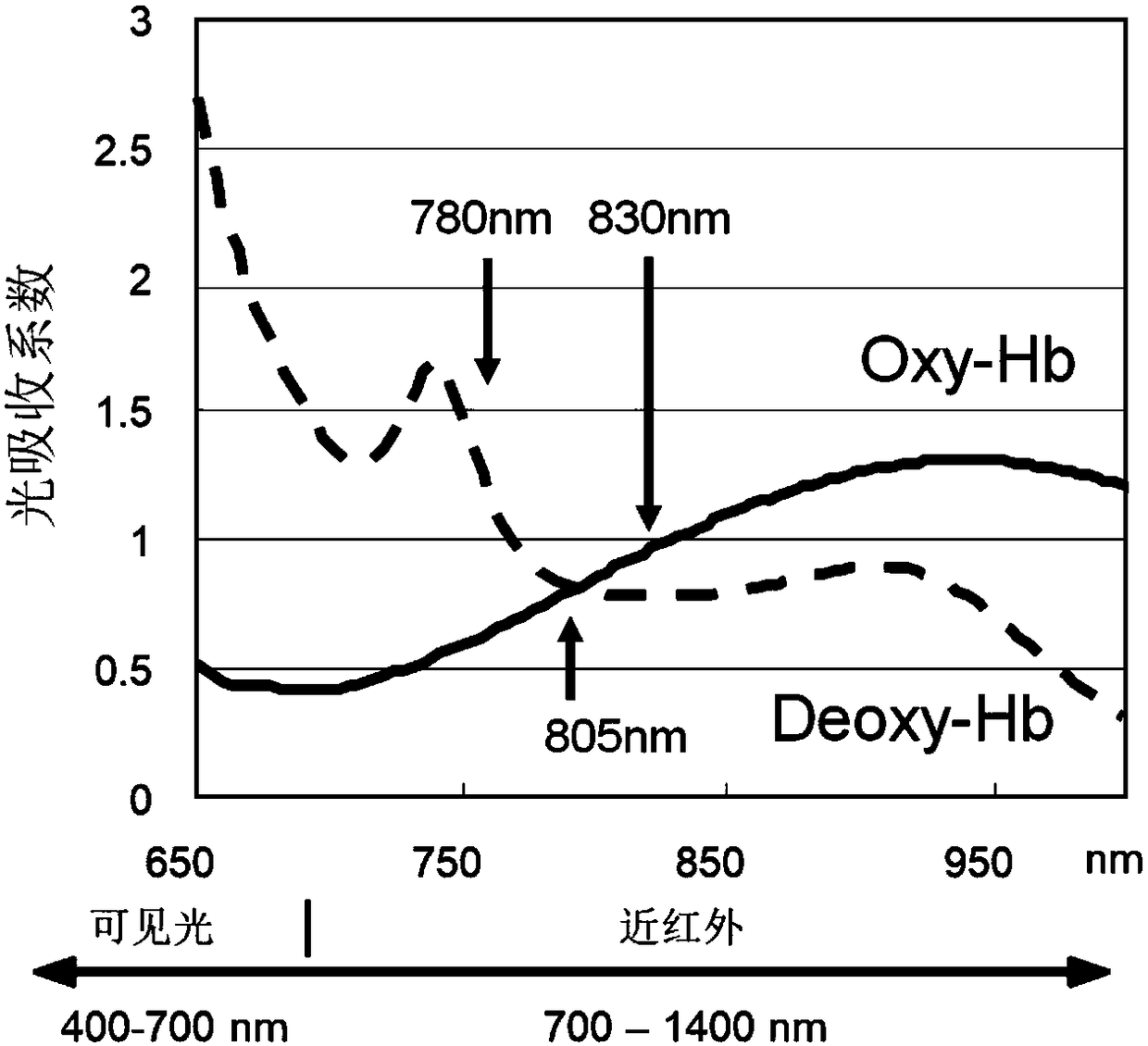Functional near-infrared cerebral function imaging system using high-low dual density optrode configuration
An imaging system and double-density technology, applied in the direction of using spectral diagnosis, application, medical imaging, etc., can solve problems such as error and fNIRS signal interference, and achieve the effect of easy implementation and improved signal quality
- Summary
- Abstract
- Description
- Claims
- Application Information
AI Technical Summary
Problems solved by technology
Method used
Image
Examples
Embodiment Construction
[0021] The technical solutions of the invention will be described in detail below with reference to the accompanying drawings.
[0022] Near-infrared light can reach a certain depth of biological tissue, and this optical property is biologically determined by the turbid medium composed of biological macromolecules (such as hemoglobin) and water molecules. Physiological tissue has two responses to light, one is absorption and the other is scattering. The main components of blood (water, Oxy-Hb and Deoxy-Hb) absorb very little near-infrared light at 600-900 nm and have good scattering, so the near-infrared light of 600-900 nm is also called spectrum windows (such as figure 1 shown). The study found that within this spectral window, two hemoglobins, Oxy-Hb and Deoxy-Hb, have an isoabsorption point near 805 nm, such as figure 1 shown. On both sides of 805 nm, the two hemoglobins show their respective comparatively dominant absorption characteristics, so it is manifested as the...
PUM
 Login to View More
Login to View More Abstract
Description
Claims
Application Information
 Login to View More
Login to View More - R&D
- Intellectual Property
- Life Sciences
- Materials
- Tech Scout
- Unparalleled Data Quality
- Higher Quality Content
- 60% Fewer Hallucinations
Browse by: Latest US Patents, China's latest patents, Technical Efficacy Thesaurus, Application Domain, Technology Topic, Popular Technical Reports.
© 2025 PatSnap. All rights reserved.Legal|Privacy policy|Modern Slavery Act Transparency Statement|Sitemap|About US| Contact US: help@patsnap.com



